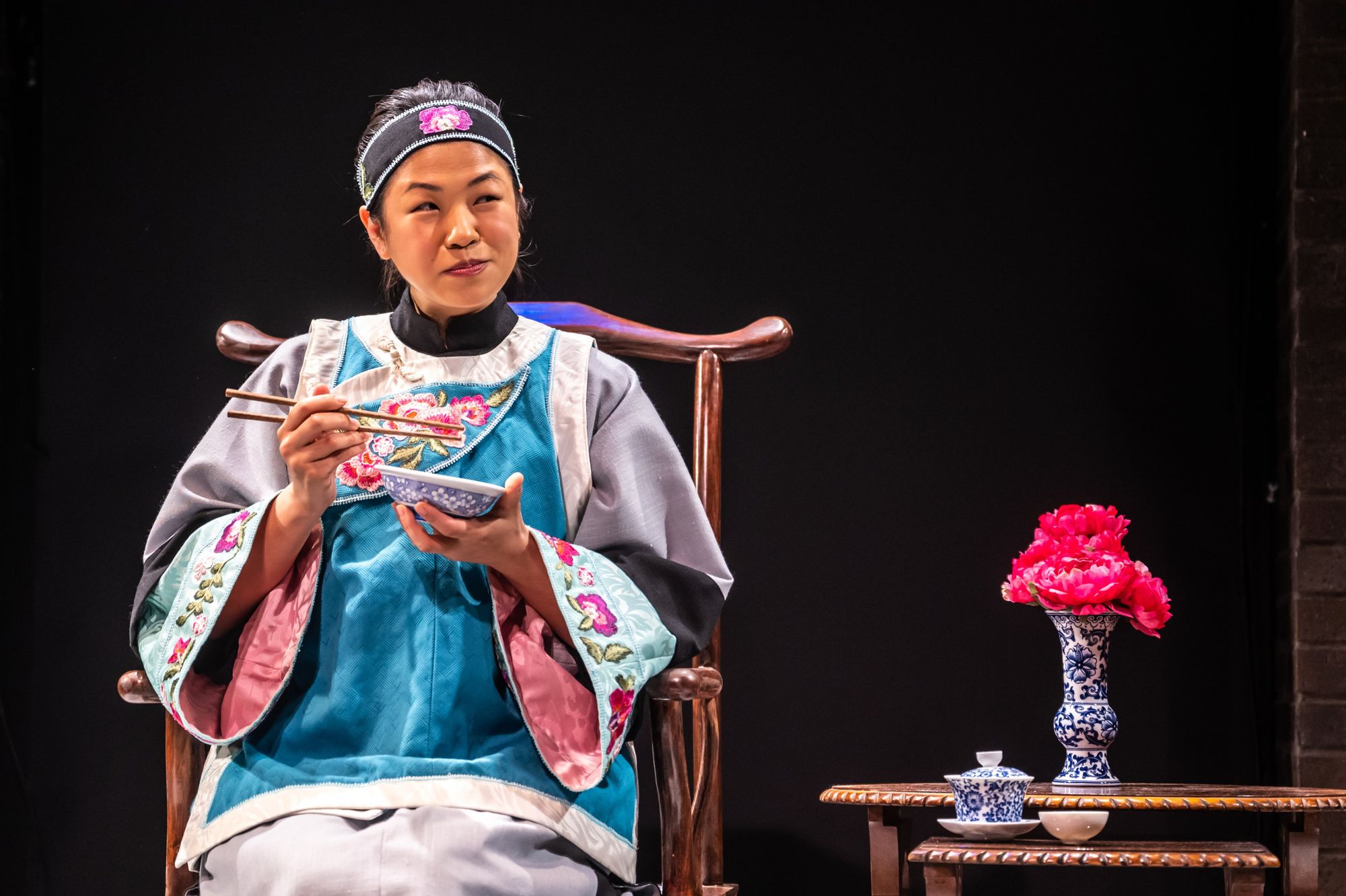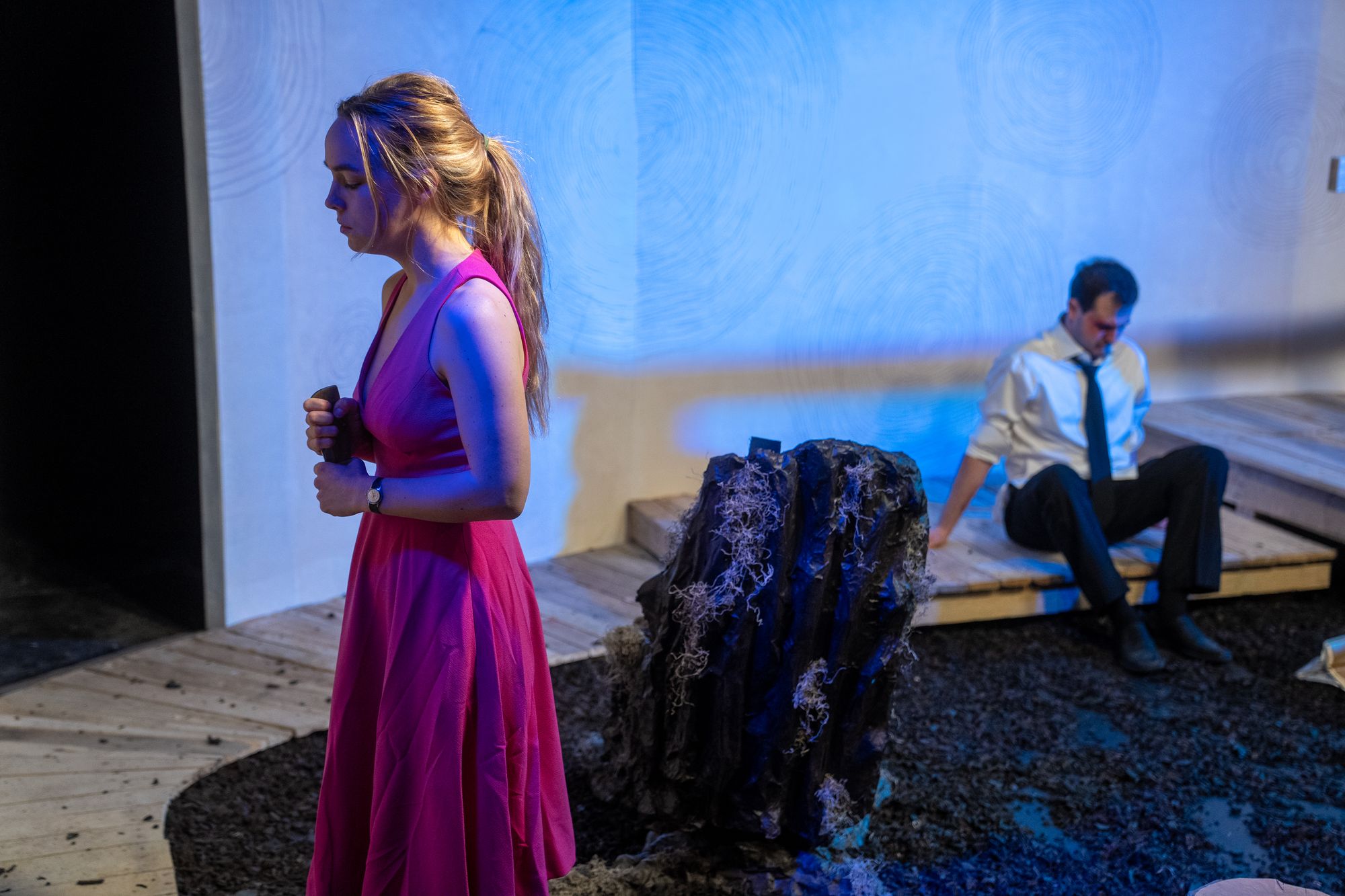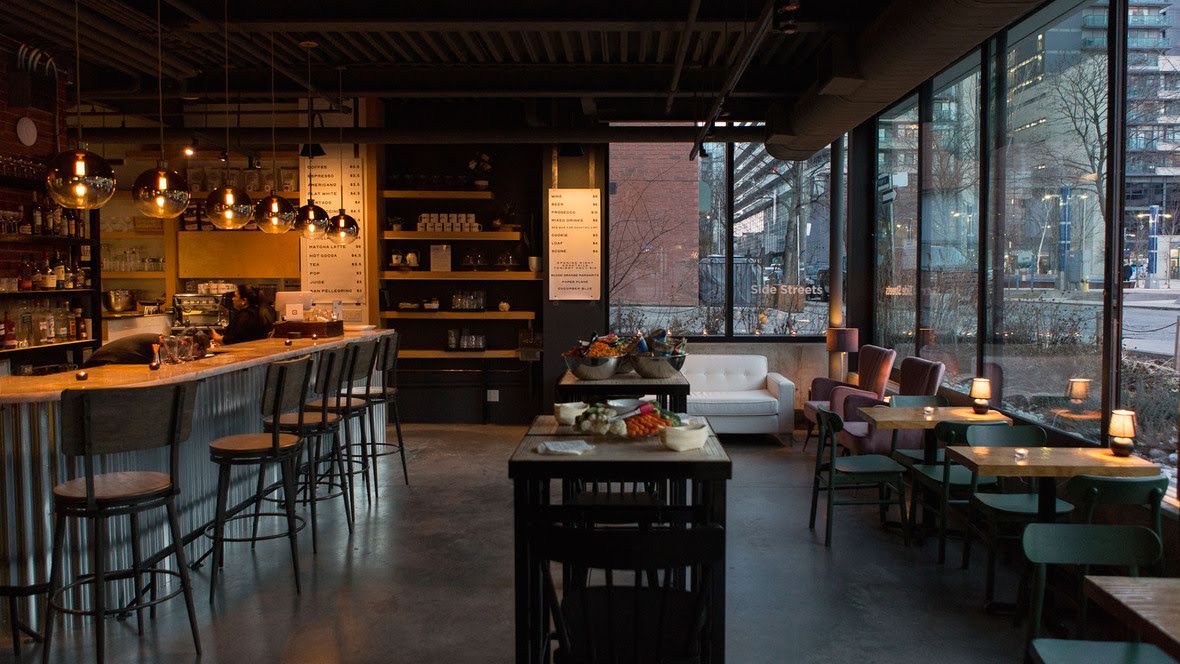Reviews: The Chinese Lady, Bone Cage and theatre bars and cafés
Lloyd Suh's play about historical figure Afong Moy and Catherine Banks's play about working-class Nova Scotians both deal with people stuck in literal and metaphorical cages

It's a little unnerving when actors are already onstage when audience members are let in to a theatre to take our seats. But in Lloyd Suh's The Chinese Lady (Rating: ✭✭✭), it feels necessary, almost essential to see the play's actors waiting inside while we shuffle in our seats, check our phones and mouth our pre-show banalities to each other.
Turns out the woman already seated in an elegant, old-fashioned wooden chair on a raised white platform (set is by Echo Zhou) is Afong Moy (Rosie Simon), and she's very used to greeting people and being watched but not fully seen. As she tells us near the outset of this clever, if overly cerebral piece, she was brought from her home in Guangzhou, China to America in 1834 at the age of 14 to be put on display for American tourists to learn about the "Orient."
For just 25 cents (for adults) and 10 cents (for children) – the sign is displayed by assistant Atung (John Ng) – Moy daintily uses chopsticks to eat a small bit of shrimp, pours herself a tiny bit of tea and drinks it and then (the big reveal) gets up to walk on her feet, which have been bound since childhood. Suh's description of this latter practice, and Simon's delivery of it, are one of the highlights of the show.
As time goes by, Moy remains on display, and Atung stays with her, although years have passed and the price of admission has increased (inflation, you know). The exhibit goes on tour, and Moy looks forward to visiting such exotic places as Baltimore and Pittsburgh (Atung, having visited some of them, knows better); eventually she joins PT Barnum's troupe. In time she sheds her fixed, forced smile, along with layers of her elegant, traditional costume (by Jung-Hye Kim).
Through it all, while going through the motions of her ceremony (with minor adjustments), she keeps us up to date on other events, like the exploitation of Chinese labourers building the transcontinential railroad, and the enforcement of the Chinese Exclusion Act of 1882.
Suh's script is full of telling details even when describing such day-to-day activities as eating; when Moy compares the elegant nature of chopsticks and the violent piercing of food with a fork, Suh's point is clear. And as Moy gains more awareness and knowledge of the world around her, she begins to understand the contradictions in it, pointing out, for instance, the fact that there were already people living in America in 1492, as well as the constricting American garments known as corsets.
In one of the play's sharpest scenes, she wonders what it would be like to uproot a 14-year-old American white girl and take her to China to display her for thousands of gawking visitors.
And in another, beautifully staged by director Marjorie Chan, she recounts meeting President Andrew Jackson, who wants to touch her foot; when she reenacts the scene with Atong, it becomes a powerful, disturbing metaphor about exploitation, fetishization and cultural imperialism.
If there's a downside to the play and production, it's that the work feels static; we're told things rather than shown them. Given the fact that Moy was first brought to America and displayed along with the furniture by Nathaniel and Frederick Carne, it would have been interesting to hear a bit more about these traders' lives.
Despite subtle and effective performances by Simon and Ng, there's also a certain monotony to the scenes, until the final 10 minutes or so. But then again, this almost feels fitting, considering the constrained, limited life Moy was forced to lead.
Produced by Studio 180 Theatre and fu-GEN Asian Canadian Theatre Company, in association with Crow's Theatre, The Chinese Lady continues at Crow's Theatre's Studio Theatre (345 Carlaw) until May 21. See info here.

Rattling the Bone Cage
One of the wonderful things about live theatre is you don't need fancy, expensive sets and elaborate lighting cues to create something magical. You can do a lot with a fine script, talented actors, strong direction and imagination.
That comes through vividly in Bone Cage (Rating: ✭✭✭✭). Presented by One Four One Collective in association with The Assembly Theatre, Catherine Banks's Governor General's Award-winning drama could benefit from a more polished production design – especially since the play's East Coast setting is so important – but its wounded heart and soul burst through in Cass Van Wyck's sensitive staging at the 50-seat Assembly Theatre.
Friends Jamie (Daniel Reale) and Kevin (Cooper Bilton) work in Nova Scotia's forestry industry, clearcutting trees and slowly drinking their lives away. Jamie's engaged to Kevin's sister, Krista (Jessi Elgood), and dreams of crossing the country to work in B.C.'s logging industry, not that Krista approves.
Meanwhile, Krista's friend – and Jamie's sister – Chicky (Kaitlin Race) is eager to leave herself, but she's unable, partly because of her father (or stepfather?), Clarence (Jimi Shlag), who's obsessed with the long-ago death of another son, and partly because of an affair she's been conducting with an unseen lout named Reg.
It would be easy to dismiss these people and their stunted, unrealized lives, but Banks grants them serious wants and desires, even if they're not sure how to act on them; Clarence, in particular, makes some really questionable decisions.
And Van Wyck has assembled a talented cast of emerging actors to bring them to life. Reale and Bilton have a jokey, believable dynamic underscored by competitiveness and violence, and Elgood brings a focus and determination to high school student Krista's single-minded wedding plans.
Most memorable is Race's Chicky, the smartest person in town who has also made some bad choices. You can see her anger, frustration and dissatisfaction in even her lightest moments – and these are directed at herself as much as others. Race and Van Wyck make you root for her.
While JB Nelles's minimal set could be more evocative, especially in suggesting the vertical distance between a bridge and a beach or clearing below, Van Wyck and the actors convince you of pretty much everything. And in their talented hands, the play's well-written and ambiguous coda, works beautifully.
Bone Cage continues at the Assembly Theatre (1479 Queen West) until May 20. See info here.

Lobbying for decent theatre bars and cafés
In the past few years, I've noticed that many Toronto theatres have upped their bar and café games. Which makes sense. As businesses everywhere are struggling with their bottom lines, why not make maximum use of your venue? Some theatres are so cramped and claustrophobic, I can't wait to leave after seeing a show. Others are somehow inviting.
Last week, I wrote about five of the best theatres to drink (and, in some cases, eat) in before or after a show for the exciting new site TorontoVerse. You can find the article here.
